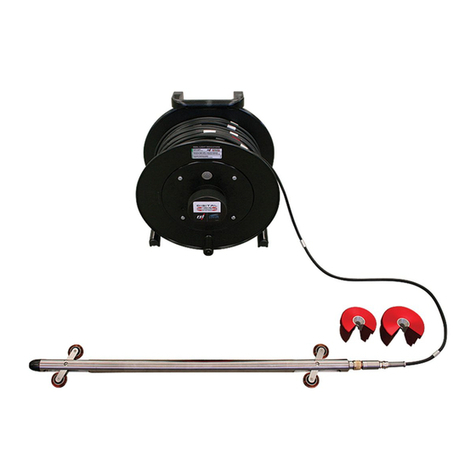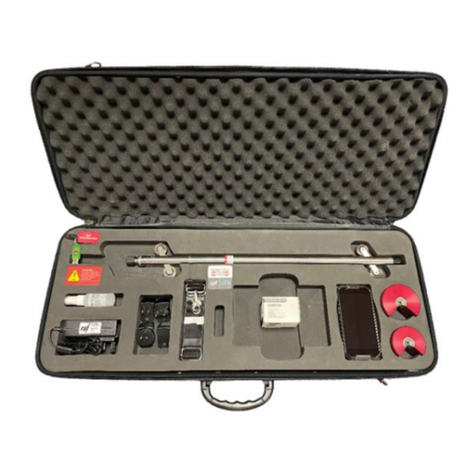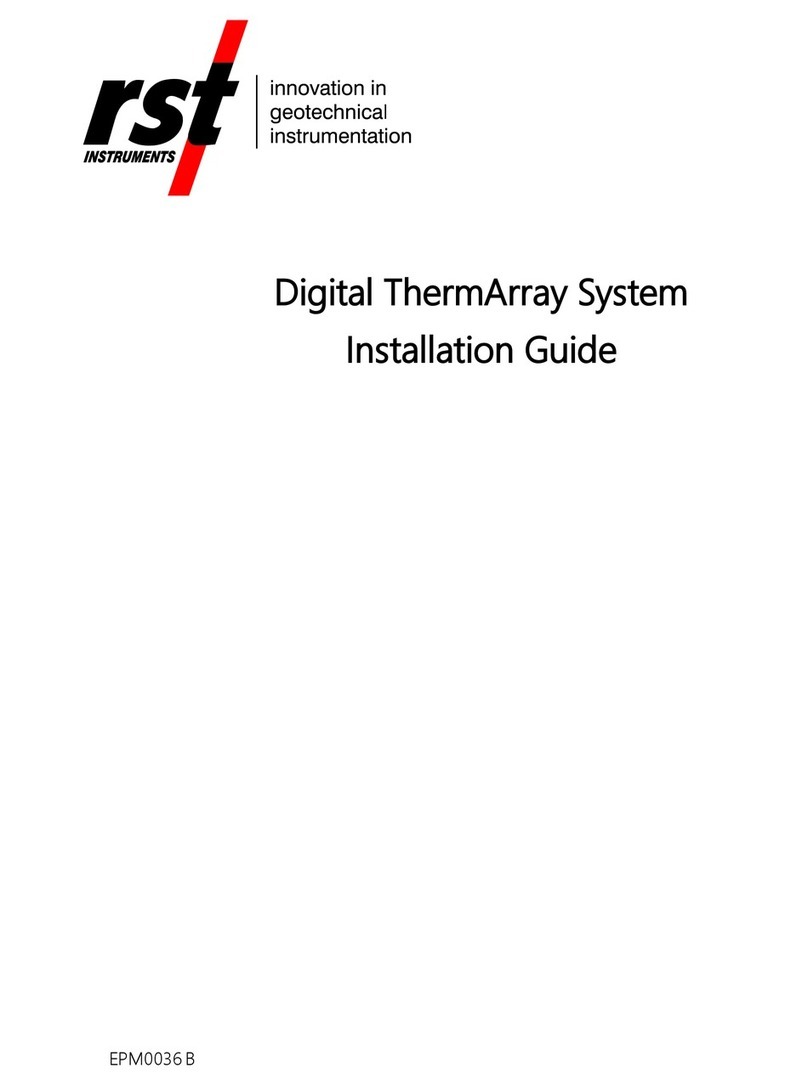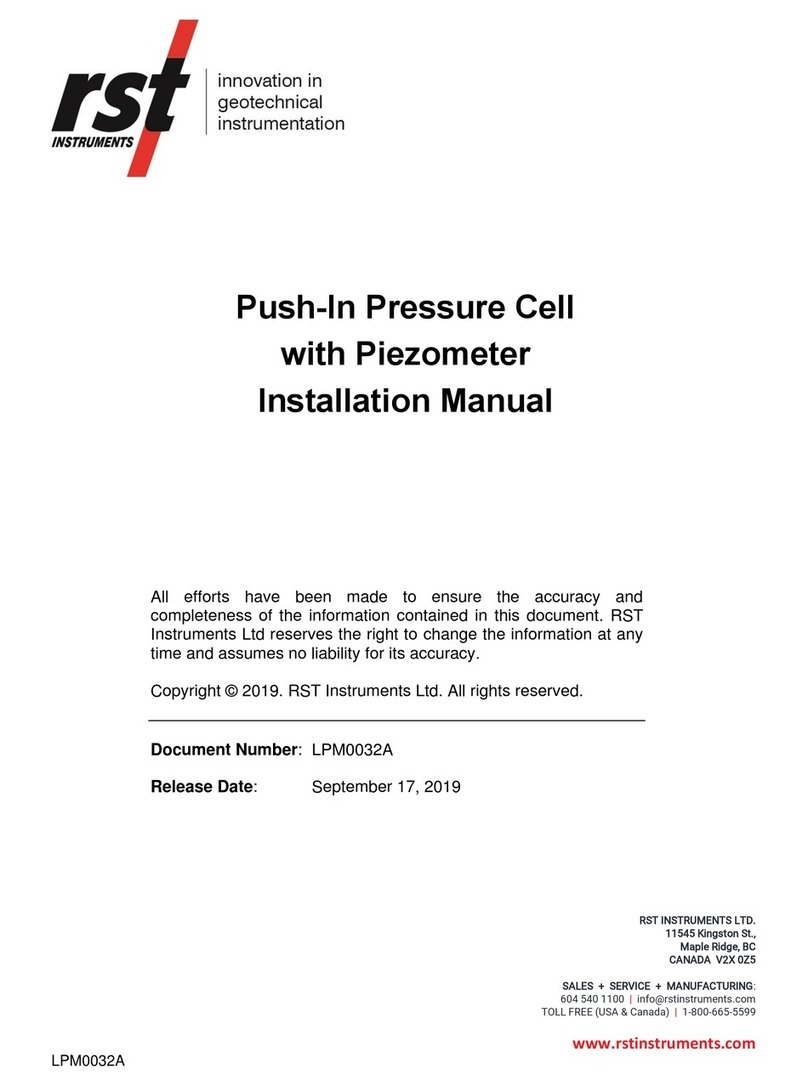TABLE OF CONTENTS
1 INTRODUCTION............................................................................................................5
1.1 Model VW2100 .................................................................................................6
1.2 Model VW2100-DP ...........................................................................................6
2 VIBRATING WIRE PRINCIPLE ........................................................................................6
3 CALIBRATION..............................................................................................................7
3.1 Field Calibration Check.....................................................................................8
4 READING PROCEDURES...............................................................................................9
4.1 VW Instrument Readings ..................................................................................9
4.2 Initial Inspection and Check Readings...............................................................9
4.3 Initial Readings .................................................................................................9
4.4 Pressure Equation (Using the VW2106 Readout) ...........................................11
4.4.1 Linear Equation.....................................................................................11
4.4.2 Second Order Polynomial Equation ......................................................12
5 INSTALLATION...........................................................................................................13
5.1 Filter Saturation...............................................................................................14
5.2 Low Air Entry Sintered Stainless-Steel Filters .................................................14
5.3 High Air Entry Ceramic Filters.........................................................................15
5.3.1 One Bar High Air Entry Filters...............................................................15
5.3.2 Two Bar (or Higher) High Air Entry Filters.............................................16
5.4 Installation in Full............................................................................................17
5.4.1 Compacted Clay ...................................................................................17
5.4.2 Granular Materials ................................................................................17
5.5 Installation in Boreholes..................................................................................18
5.5.1 Sand/Bentonite Method.........................................................................18
5.5.2 Fully Grouted Method ...........................................................................20
5.6 Piezometers Drive In Soft Ground...................................................................22
5.6.1 Installation.............................................................................................22
5.7 Cable Identification .........................................................................................23
5.8 Cable Routing.................................................................................................23
5.8.1 Transition from Vertical Borehole to Horizontal Trench .........................23
5.8.2 Horizontal Cable Runs..........................................................................23
5.9 Lightning Protection ........................................................................................24
6 TROUBLESHOOTING ..................................................................................................25
6.1 VW Piezometer Fails to Give a Reading .........................................................25
6.2 VW Piezometer Reading Unstable..................................................................25
6.3 Thermistor Reading is Too Low ......................................................................26
6.4 Thermistor Reading is Too High......................................................................26
7 SPECIFICATIONS........................................................................................................27
8 SERVICE AND REPAIR................................................................................................28
APPENDIX A:VW2100 CALIBRATION SHEET ...................................................................29

































